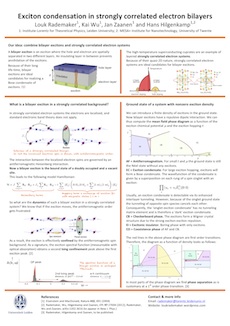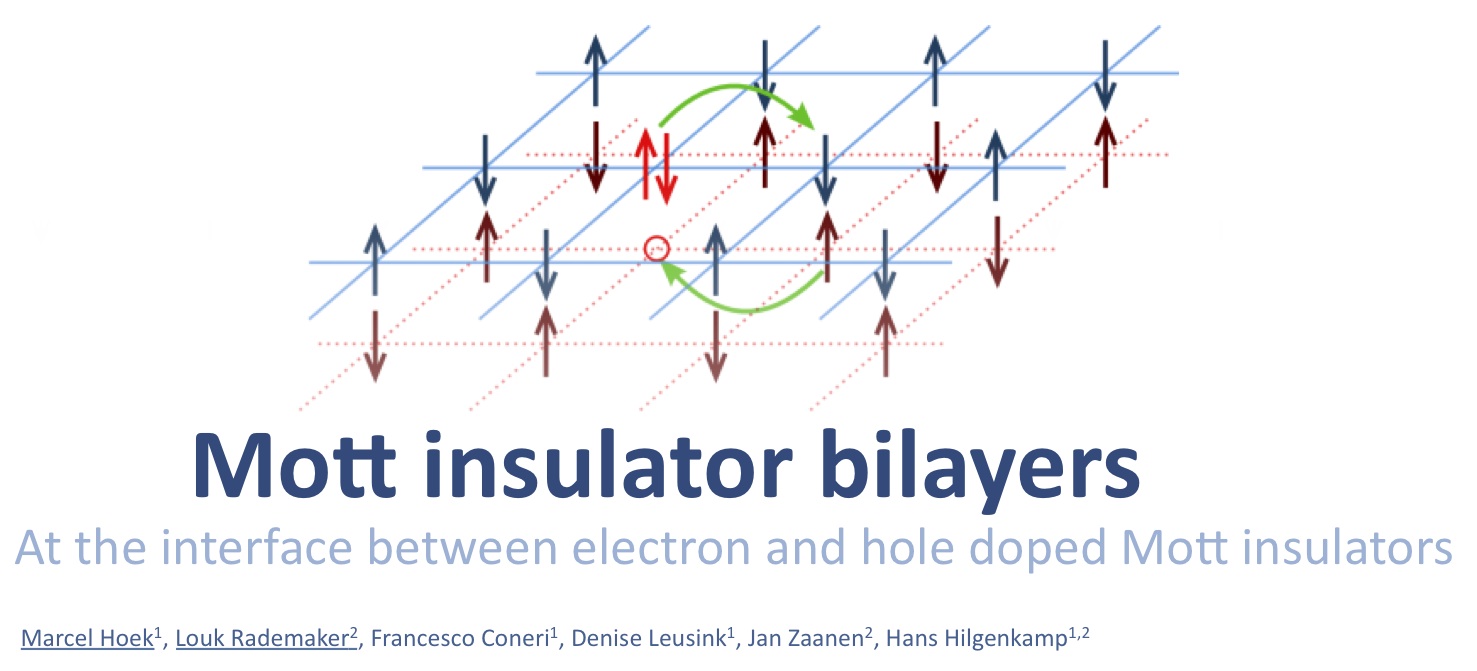The extended paper on the properties of a single exciton, following up on my earlier Europhys Lett, is accepted and published in the New Journal of Physics.
Title: Dynamics of a single exciton in strongly correlated bilayers
Abstract: We formulated an effective theory for a single interlayer exciton in a bilayer quantum antiferromagnet, in the limit when the holon and doublon are strongly bound onto one interlayer rung by the Coulomb force. Upon using a rung linear spin-wave approximation of the bilayer Heisenberg model, we calculated the spectral function of the exciton for a wide range of the interlayer Heisenberg coupling α = J⊥/Jz. In the disordered phase at large α, a coherent quasi-particle peak appears, representing free motion of the exciton in a spin singlet background. In the Néel phase, which applies to more realistic model parameters, a ladder spectrum arises due to Ising confinement of the exciton. The exciton spectrum is visible in measurements of the dielectric function, such as c-axis optical conductivity measurements.
Reference: Louk Rademaker, Kai Wu and Jan Zaanen, New J. Phys. 14, 083040 (2012).

 At the
At the 



